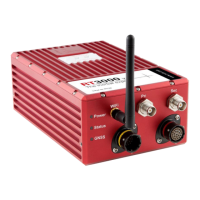You can see the RT is nearly at specification after just this small amount of driving.
However, experience tells us the Kalman filter will continue to make some improvements
(not obvious) during the first few figures of eight. The main part of the motion occurs
after 1100 s when the car was driven in a figure of eight for 6 minutes.
These are fairly large figures of eight driven at relatively low speeds. Notice the brake
stops in the velocity graph ((a) in Figure 41) where the speed falls to zero. These are
important parts of the warm-up – so as many states in the Kalman filter as possible can
be updated.
Notice how close to the specification the RT is even without the figure of eight
manoeuvres. A proper warm-up is recommended in order to achieve the highest level of
accuracy. However the effect is small and only significant when you need the full
performance of the RT.
Improving the configuration after a warm-up
Committing the configuration to the RT
After the warm-up process has been completed you can commit the improved settings to
the RT using NAVconfig. The RT takes its improved orientation, antenna positions and
wheel speed sensor position from values generated in real time during the warm-up and
uses them to improve accuracies.
To commit improved settings to the RT, first open NAVconfig and select ‘Improve
configuration’. Figure 43 shows this option on the NAVconfig home section.

